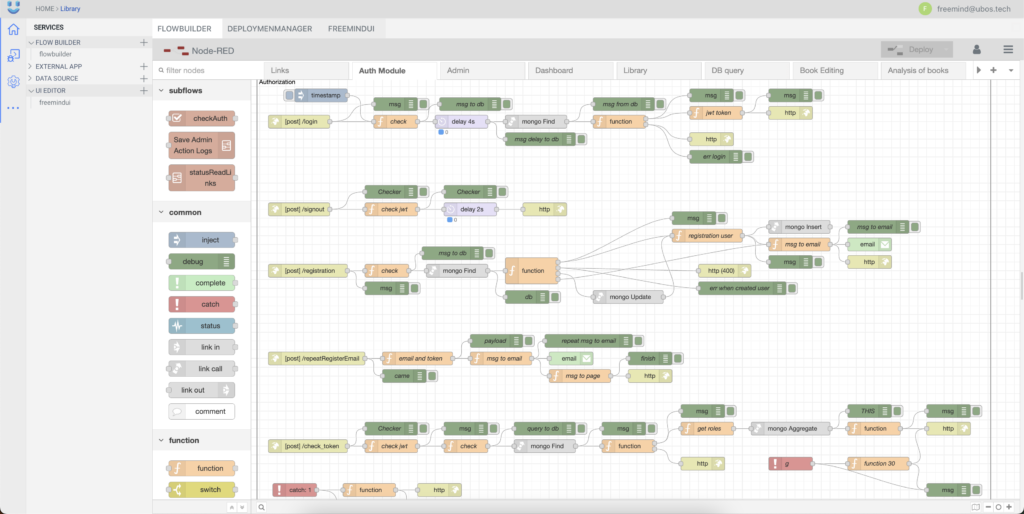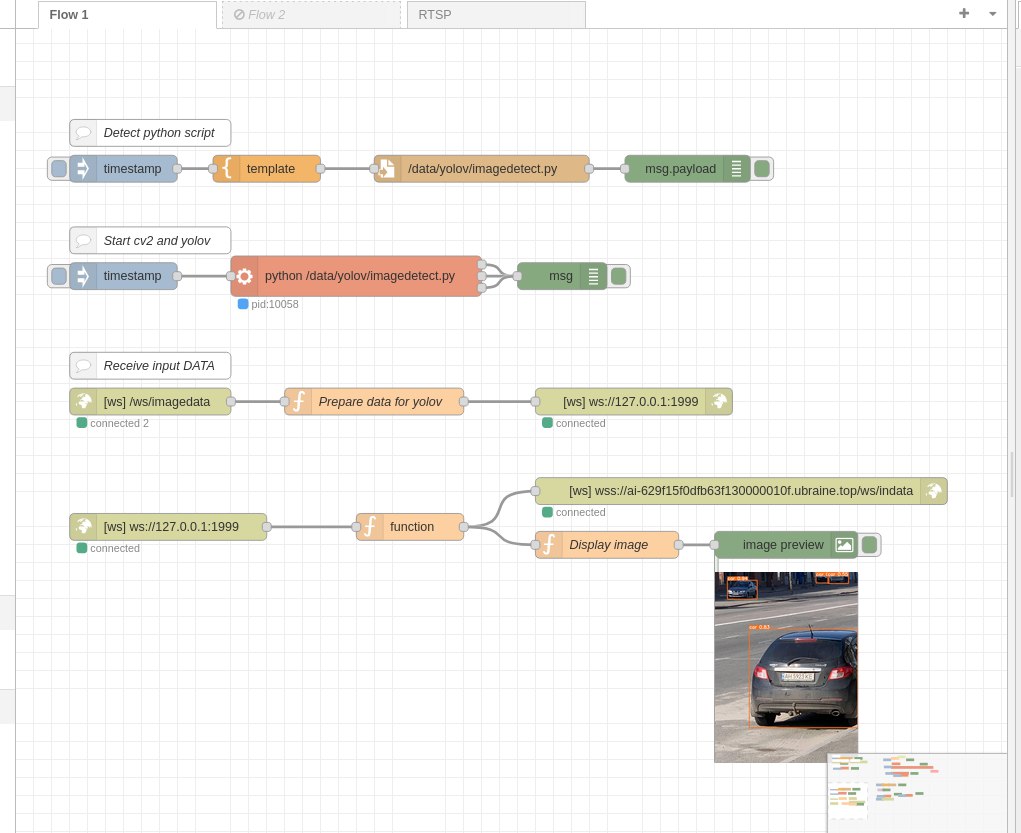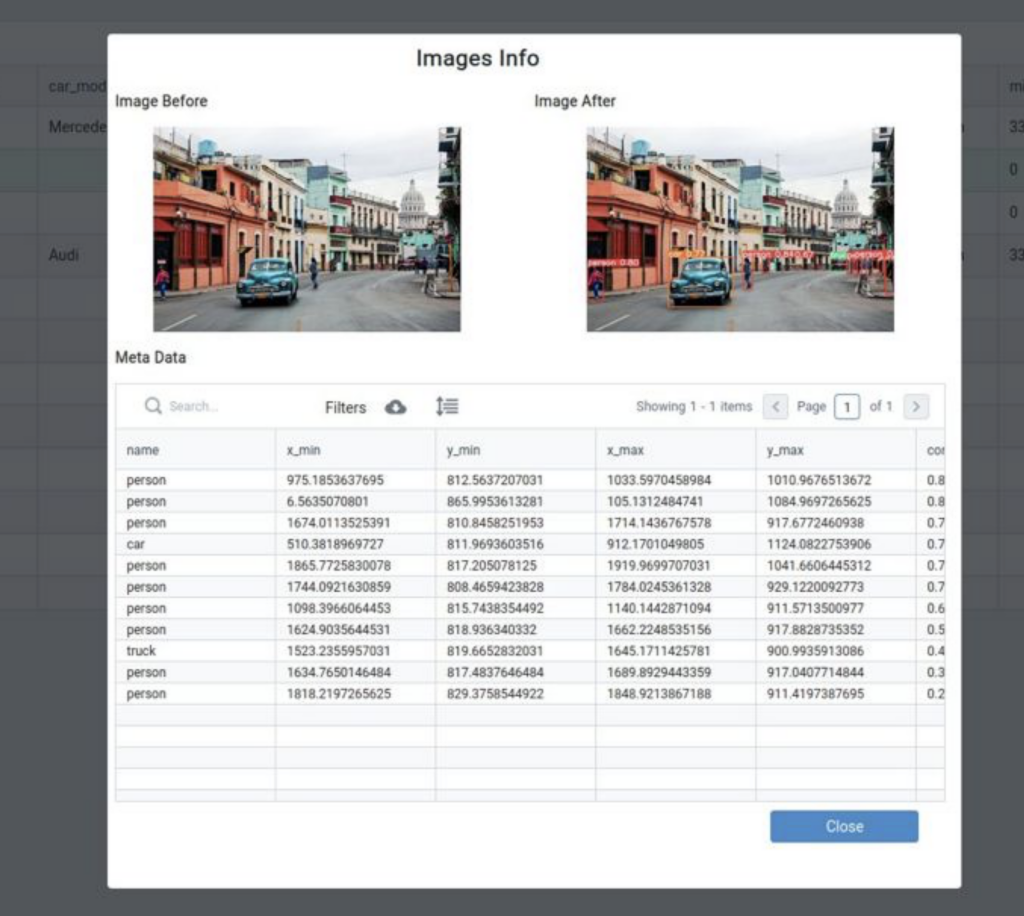- March 30, 2023
- 7 min read
Unlock the Power of Visual Recognition for Business Growth with AI and Node-RED
Node-RED and artificial intelligence (AI) are two potent technologies that when combined can create awe-inspiring things. Node-RED is a tool that assists individuals in designing visual programs to manage their data, and AI can aid in analyzing and interpreting that data. The combination of these two technologies can yield solutions that automate work processes, optimize operations and generate valuable insights from data.
In this article, we shall delve into the essence of Node-RED and AI, and provide concrete examples of how they can be utilized collectively to produce impressive results. Furthermore, we shall provide you with practical guides to help you kick-start your journey with Node-RED and AI. Whether you’re a software developer, data scientist, or business owner, this article will explain why combining Node-RED and AI can be beneficial to you. So, let’s get started!
What is Node-RED?
Node-RED is an open-source visual programming tool that furnishes a web-based flow editor for connecting devices, APIs, and services. It allows users to create and visualize their event-driven applications with ease. By adopting a low-code approach, Node-RED can expedite the development process and make application development accessible to developers and non-developers alike. As it is built on Node.js, users can extend its functionality by developing their own nodes or by taking advantage of the vast JavaScript and npm ecosystems.

Although Node-RED is best suited for IoT applications, as it can be run on devices such as the Raspberry Pi, it can also be deployed on laptop and cloud environments for any event-driven application scenario. The fundamental building block of Node-RED is the node, of which there are numerous provided by the community. Each node has a well-defined purpose and plays a pivotal role in constructing flows. Generally, nodes take in input and produce output, which is utilized by other nodes. By stringing together a sufficient number of nodes, users can build fully-fledged applications. To discover more about utilizing Node-RED, read on.
How to create a Node-Red instance in a single click on UBOS.tech low-code platform: Tutorial
Artificial Intelligence
Artificial Intelligence (AI) is a field of computer science that aims to create intelligent machines capable of performing tasks that typically require human intelligence. AI systems can learn from experience, adapt to new inputs, and perform tasks that were previously possible only for humans.
There are two primary types of AI: narrow or weak AI, and general or strong AI. Narrow or weak AI refers to systems designed to perform a specific task, such as image recognition or language translation, and cannot learn beyond their designated task. General or strong AI, on the other hand, is designed to perform any intellectual task that a human can do.
AI systems are powered by algorithms and models that mimic human intelligence. These models can analyze large amounts of data to identify patterns, make predictions, and provide insights. AI is used in various applications, such as self-driving cars, speech recognition, natural language processing, and medical diagnosis.
As AI continues to advance, it has the potential to transform many industries and improve our lives in numerous ways. However, there are also concerns about the ethical implications of AI, such as job displacement and algorithmic bias. It’s crucial to carefully consider the benefits and risks of AI as we continue to develop and implement this technology.
How Node-Red Could Be Used for Vision/Visual Recognition
At present, there is an increasing demand for computer vision and visual recognition technologies. With the rise of machine learning and artificial intelligence, there is now an array of applications that require image recognition, including face detection, object tracking, and even autonomous vehicles. In this article, we will discuss how Node-Red can be used for vision and visual recognition.

Why Use Node-Red for Vision and Visual Recognition?
Node-Red is a powerful tool for visualizing data and workflows. It can be used to create custom dashboards, automate tasks, and even build entire applications. When it comes to vision and visual recognition, Node-Red can be used to create custom workflows that can handle image recognition tasks with ease.
Node-Red provides a wide range of pre-built nodes that can be used to handle image processing tasks, including the ability to read and write image files, resize images, and apply filters. Additionally, Node-Red can be used to integrate with other image recognition APIs, such as Google Vision API, which allows you to perform advanced image recognition tasks.
How to Use Node-Red for Vision and Visual Recognition with YOLOv5
To use Node-Red for vision and visual recognition, you will need to first install the necessary nodes. You can do this by using the Node-Red palette manager to search for and install the relevant nodes.
One popular library for object detection and classification is Yolo (You Only Look Once). Yolo is a deep learning algorithm that can perform object detection and classification in real-time. Yolo is able to detect objects in an image or video frame with a single forward pass of a neural network. This makes it a very fast and efficient algorithm for object detection.
Node-Red provides a visual interface for creating custom workflows and automating tasks. By integrating Yolo with Node-Red, you can create custom object detection workflows that can be triggered by a wide range of events, such as the arrival of a new image or video frame.
For basic YOLOv5 python script, you should use the official git repo: https://github.com/ultralytics/yolov5
To run a basic Yolo script in Node-Red, one can utilize the Exec node, which allows for the execution of a system command or script. By configuring the Exec node to run a basic Yolo script, one can create a simple microservice that can handle object recognition in real time.

With the basic Yolo script running in Node-Red, one can send an array of images for object detection and classification. The results can be saved to a database, enabling a basic pipeline for visual recognition.

With Node-Red, custom workflows can be created to trigger the execution of the Yolo script, such as triggering the script when a new image is received or when a certain event occurs. Additionally, custom workflows can be created for further processing of the results of the object recognition, such as sending notifications or generating reports.
How Object Recognition could be used in Business
Retail and Marketing
In the retail and marketing industries, Yolo with Node-Red can be used for real-time product recognition, enabling businesses to track inventory levels and analyze sales data. By integrating the results with other business intelligence tools, businesses can optimize their product offerings and improve their customer experience.
Security and Surveillance
In the security and surveillance industry, Yolo with Node-Red can be used for real-time object detection and classification, enabling businesses to enhance their security measures and protect their assets. The results can be integrated with other security systems, such as alarms or access control systems, to enable prompt response to security threats.
Manufacturing and Logistics
In the manufacturing and logistics industries, Yolo with Node-Red can be used for real-time tracking of goods and products, enabling businesses to improve their inventory management and supply chain operations. The results can be integrated with other logistics systems, such as shipment tracking or delivery management, to optimize the entire logistics process.
Conclusion
In conclusion, Yolo with Node-Red is a valuable tool for businesses looking to leverage the power of visual recognition for various purposes. With the ability to create custom workflows, businesses can create a solution that is tailored to their specific needs, enabling them to optimize their operations and improve their bottom line.
Andrii Bidochko
CEO/CTO at UBOS
Welcome! I'm the CEO/CTO of UBOS.tech, a low-code/no-code application development platform designed to simplify the process of creating custom Generative AI solutions. With an extensive technical background in AI and software development, I've steered our team towards a single goal - to empower businesses to become autonomous, AI-first organizations.
